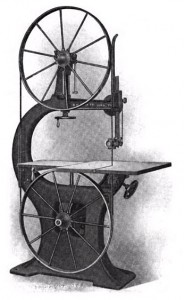
The Overall Equipment Effectiveness (OEE) is by far and wide the most lied-about and fudged measurement on the shop floor, both intentionally or by accident. This post tells you the top three different ways how an OEE is fudged, so you know which OEE to trust and which one not.
The OEE is easy in theory, but it has some practical difficulties in measuring, so even a well-intentioned OEE measurement is often flawed. Additionally, for many managers, performance-based compensation may be based on the OEE. Even if not, a good OEE gives better bragging rights. Hence, there is a tendency in industry to inflate OEEs.
After the definition of OEE and how OEE is measured, this post will focus on how the OEE can be fudged. In the next post we will look at what the OEE is good for and what it’s not. The reason for this post is not to teach you how to to fudge your OEE. Rather, I would like to tell you how to be cautious about other OEEs that are told to you, especially if OEEs influence your decision making; in that case, you need to understand (potentially) manipulated OEEs that are reported to you.
As discussed in my previous post on how to measure OEEs, the OEE is based on the number of parts that were produced compared to the number of parts that could have been produced in a certain time (the time basis) at maximum possible speed (the speed basis). Since these are the only three numbers going into the OEE itself, these are the numbers that can be, in theory, manipulated.
1 – How to Fudge Your Speed Basis
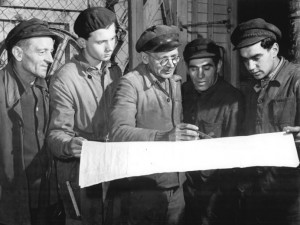
The true speed of a process or machine is supposed to be the best possible speed that can be repeated. However, this is difficult to measure. Below are a number of options for how to manipulate this speed.
For example, it is possible to measure merely the average speed of a good day and use this number as the top speed. However, in this case, the average speed already includes losses. Even a good day includes some stops, delays, or defects. If, for example, the true OEE on a good day would be 80% (not an unusual number), then any “OEE” based on an 80% speed would have a 20% “discount“.
Yet another possibility is to use outdated data. Processes in industry are constantly changing and frequently improving. If the “true speed” on record is a few months old, it is possible that the process has improved since then. Yet, if you base your OEE on an assumption of fifty parts per hour, but in reality you can already do fifty-five parts per hour, then your OEE goes up again. In similar cases the workers may have found that they can increase the speed setting of the machine without ill effect and use this to achieve their quota with greater ease.
The true speed is particularly difficult to measure in processes that involve human workers. Measuring a worker with a stopwatch leads to manipulation by the worker. In most cases, the worker may work much slower than normal, so as not to reveal the true possible speed and damage his performance bonus. Using a system of predetermined motions (for example, REFA or MTM) may also include losses already, for example contingency allowances. REFA, for example, assumes a contingency allowance for technical and personal disruptions (e.g., the bathroom break). While I definitely don’t want to restrict workers from going to the bathroom, the resulting stop is an OEE loss that can be avoided through, for example, another worker covering the break. However, for the purpose of calculating the OEE these contingency allowances must be excluded.
Additionally, in my experience, predetermined motions are usually slower than a experienced worker. In REFA, for example, a “speed estimation” is often included, which may make a difference of about 30%. Depending on the chosen number for the speed basis of the OEE, the OEE may be much different. In general, the lower the speed basis is compared to the true maximum speed, the higher the OEE.
2 – How to Fudge Your Time Basis
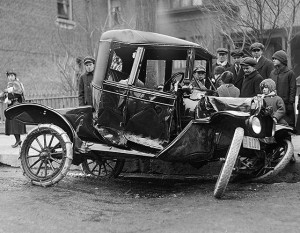
Probably the biggest lever to manipulate your OEE is the time basis. The time basis is the time a machine is supposed to work. A common approach to inflate OEEs is to take availability losses out of the time basis. For example, planned maintenance is a loss, but in most plants I have seen, planned maintenance is taken out of the OEE equation. Depending on the plant, this may be another 5% OEE boost.
The same goes for breaks. Forty-five minutes of breaks during an eight-hour shift represents an OEE loss of almost 10%. It is possible to cover these breaks with a stand-in or with staggered breaks, where a colleague keeps the process running while the other worker is taking a break. Yet in most industry that I have seen, breaks are not included in the OEE. This is another 10% OEE boost. Some particularly brash plants do have staggered breaks, yet they still take these breaks out of the OEE! Not only are the 10% breaks not counted, they even make parts during these not counted 10%, inflating their OEE both through reduction of time basis and increase of number of parts!
In a similar vein, unplanned breakdowns are miraculously turned into planned stops or changeovers and may be excluded. Even overtime may be excluded, leading again to even more parts in not counted time.
3 – How to Fudge the Number of Parts Produced
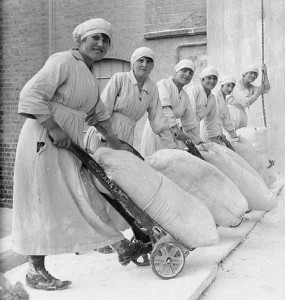
In practice, the number of produced parts are usually accurate. In my experience, all but the worst of the worst plants know roughly what they have produced. Hence, the number of parts produced is usually rather accurate.
However, it is possible to fudge these numbers. The easiest way is to simply lie about the true numbers, as was commonly done in communist China. During the Great Famine 1958–1961, harvest numbers were wildly inflated. Some officials claimed that they harvested so much grain that it would have covered the field ankle deep with rice or piled it a meter high with potatoes. Even Chairman Mao, son of a farmer, eventually stopped believing these numbers. In modern industry, lying about production quantities is absolutely not recommended, as it will likely be found out and may be reason for termination.
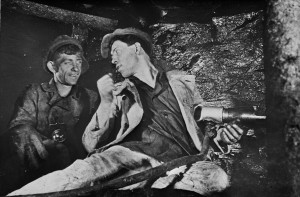
In the Soviet Union, another way to fudge production numbers was common. Rather than reporting total quantities, the quantities of one shift or one worker was reported. One particular individual, Aleksei Stakhanov, Hero of Socialist Labor, was reported to have mined 102 tons of coal in one shift, about 14 times his quota. Later he even exceeded that by mining 227 tons of coal in one shift. This was soon followed by similar over-achievements by other workers and named the Stakhanovite movement.
Naturally, it was all bogus. The production of multiple shifts was merely counted during one shift, the output of many different workers was credited to one “Hero,” or the workload was redistributed so that the “Hero” didn’t produce the entire product, but merely added the last touch with everything else being prepared by his coworkers. In any case, while it looked good on paper, it was far from reality.
Finally, a last option to inflate the number of parts is to ignore quality losses. If scrap and rework are counted as good parts, the OEE goes up yet again. And, if the defect is found out only at the next process (or even the customer), it may not show up at all in the OEE losses.
What OEE to Expect?
Such number fudging is widespread in industry, inflating the OEE. In many cases this is not even with malicious intent, but rather defined as the company standard and done similarly across plants and processes. Yet unless you know how the time basis, speed basis, and number of parts is determined, it is pointless to compare OEEs.
In my experience, OEEs are usually measured in a way to put the OEE in a 80%–95% range, regardless of the true performance of the process. These numbers please the upper management, and hence they get what they want. Of course, the theoretical maximum should be 100%, as this should be the fastest possible speed. However, I have also seen countless mediocre plants happily reporting an OEE of 105% or similar. (If I had a dollar for every OEE above 100% that I have seen … then I could take my wife out for a nice pizza 🙂 )
The question is, how would these OEEs look if they had been measured without manipulation? I have measured quite a few of them myself, and it is usually much less than the official 80%–95% (and beyond) range. In my experience, most processes in Western industry have a true OEE in the range of 40% to 60%, not more. Even OEEs of 30% or less are not uncommon. The difference between the true 40%–60% and the reported 80%–95% is nothing but self-deception.
The best true OEE I have seen so far was during my time at Toyota, where the true OEE is around 85%–90% (and they say an OEE above 90% means that your lot sizes could be smaller and you should do more frequent changeovers).
I sincerely hope that this post helped you to understand the value of an OEE number (or the lack thereof), and how an OEE has little value unless you understand the details behind it. I also sincerely hope that you do NOT use this information to fudge your OEEs, as this will not help your enterprise (albeit, depending on your boss it may help your career—or curtail it). Now, go out and improve your Industry.
See also my other posts on OEE:
- Definition of OEE
- How to Measure the OEE
- Top Three Methods on how to Fudge Your OEE
- What the OEE is Good for … and What it’s Not

Hi, i just discovered your website and i liked it very much.
i want to share my ideas about OEE calculation and i wonder you thoughts
Performance part : As you mentioned it is very difficult to define a standart time. Thats why i propose to ignore this part untill we achieve to improve OEE for availability and quality.i never saw a big difference between actual and theoritacal speed. There is a gap but not much. We must trust our operators (and when i tried to speed up the machine, quality started to decrease). if A and Q level is high, then we can consider P part.
Planned stops : i dont add planned maintenance or break times. İf you cant organize your labors to work in break time (due to lack of employee for example) no need to add this section. if we add, OEE will decrease and when we discuss about it, we will tell each other, ” oh that %10 percentage comes from break times, improvement meetings….” and pass that part. İf we pass the data, why do we measure it ? So i propose again everyone to focus on availability and quality firstly
Hi Ergün, if your theoretical speed and your actual speed is very close, then I wonder if you miss out a lot of losses. It is quite difficult to repeat a process flawless every time. I agree, however, that measuring cycle time is tough. I wrote a few blog posts on this topic alone.
Thanks for the compliments on my writing 🙂
Thank you for sharing this great topic.
Dear Chris
You have touched a very good point in this article. I have installed and overviewed many OEE calculations in different technologies in my career, and in my experience the most frequent way to fudge with the OEE is to play with the available time, either shortening it due to “planned” whatever events or working during the planned breaks and still enlisting a stoppage due to those same breaks.
One can detect shorter than assumed cycle times also by looking at Performance alone, where Performance above 100% will indicate that there were too many parts produced in the reported/calculated “actual operating time”. This can be due to either too short a cycle time or too many/too long stoppages reported in the availability section.